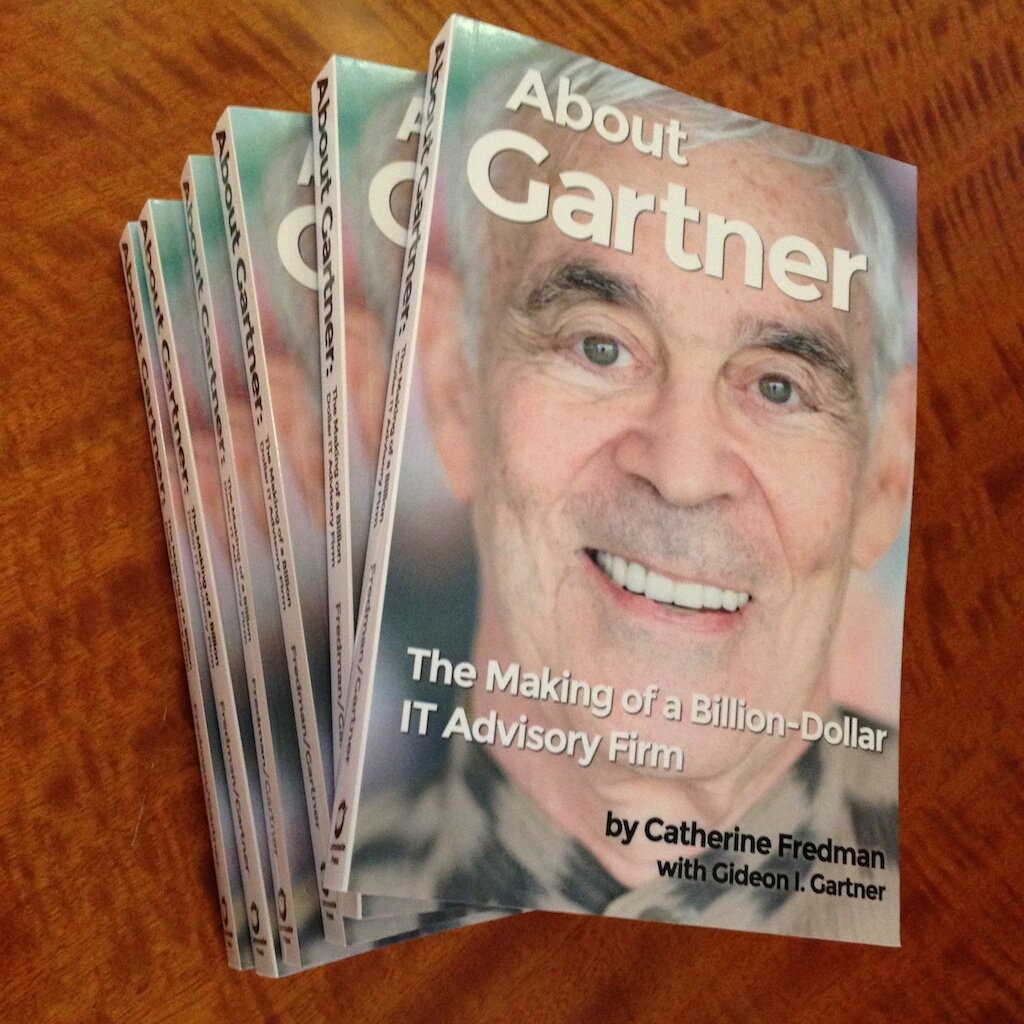By Barbara French and Gideon Gartner (@bfr3nch, www.barbarafrench.net, @gideongartner,gideongartner.com)
 There’s a good deal of speculation on whether the research and advisory business is entering a new phase — one in which small Advisory firms may be thriving at the expense of the large firms. David Hatch summed up this point of view in a forestercomment to “Advisory Industry, a future redesign: the ‘Payment’ Model”:
There’s a good deal of speculation on whether the research and advisory business is entering a new phase — one in which small Advisory firms may be thriving at the expense of the large firms. David Hatch summed up this point of view in a forestercomment to “Advisory Industry, a future redesign: the ‘Payment’ Model”:
“Independents are growing in number while research firm-employed analysts are shrinking… This shift is likely going to be the genesis of the new business model…”.
Is there in fact a groundswell favoring the smaller firms? Cutting to the chase, we beg to disagree, but we should be able to find hard evidence as well as qualitative assumptions and begin to see possible implications for the analyst business at large.
As David implies, counting heads is one way to measure sea change. But even when cutting its claimed analyst force down, Gartner generally has had a greater than 50:1 edge in research personnel vs. the any of the small Advisories. What is not clear is whether manpower size alone is more important than some combination of factors such as:
Depth of coverage in specific areas
Average analyst quality
Breadth of deliverables (content types, events, etc.)
Frequency, depth and and quality of personal interactions
Length of contract “lock-in” ( Gartner has been pushing 2- and 3-year contracts)
Reputation
Broad spread of client seats (difficult to displace)
Clients being change-averse to replacing Advisories of long standing
Selling to multiple constituencies rather than to vendors only (which improves an Advisory’s understanding of the overall territory)
Cornering the CIOs and other senior positions when selling to large non-vendor enterprises
Quantity does not equal quality. Yet, there is no realistic method to measure the average quality of different Advisory firms in their sphere of activity, and it must be acknowledged that G&F both score relatively high on most of the 10 points above.
What about the David vs. Goliath buzz? Private conversations with appropriate contacts follow the usual recessionary story-lines and seem to favor the small firms:
Vendors and their analyst relations (AR) departments are doing new advisory deals with small firms and even with individual analysts laid off by IDC, Forrester and Gartner. Those are generally recognized for unique skills and the stand-alone analysts are expected to continue in this role. Even as vendors allocate budget to smaller firms, they are invariably renewing Forrester and Gartner contracts, as usual.
Other analysts who have stayed put during the recession may be heard murmuring that they’re ready to jump to something new, indicating they see opportunity in the wings.
Several small firms and solo advisors are compensating for the poor economy by doing an excellent job of public relations, thus garnering disproportionate attention and hopefully monetizing their efforts through social media.
There may be some truth above, but insufficient to prove material penetration of the small firms’ client bases. Other initiatives exist, but none seem to offer evidence on the extent to which relative market shares might evolve during the next few years. Only the two large leaders provide solid financials and shareholder discussions, therefore we know that Gartner and Forrester enjoyed good quarters recently which were however influenced by both their publicly divulged future 5%-7% annual price increases (regardless of the economy) and with no more price negotiating going forward. If such reported pricing inflexibility by G&F can be maintained, that might help the strongest of the small competitors to slowly penetrate the fortresses. Then again, G&F’s CEOs are committed to win and if necessary may reverse field on their pricing strategies and hold their own.
Mathematically, even with accelerating business volumes, we’d bet that it would take small Advisories ages to make significant inroads on G&F. Outsell’s Louise Garnett estimates average growth in the overall information industry at around 10% per year. That means small firms need to grow faster than the industry average for 15 to 30 years to reach the size of an AMR Research or Burton Group! Do today’s young analyst companies have to face that long a runway before reaching what might be called “critical mass”? Or are these firms satisfied — even desirous — in remaining small and independent, without needing to worry about large staffs and investors? Either way, G&F likely do not have much to worry about.
That’s not to say that there will be zero competitive inroads against G&F. Opportunities exist to mount significant competitive inroads. We think the most important could emerge from meaningful innovations, preferably true game-changers requiring specific assets which the established competitors have been unable to muster thus far.
We’ll discuss some noteworthy innovators and our ideas on seizing the competitive opportunity in the Advisory Industry in Part 2.
Editor’s Note: This has been cross-posted at Barbara French’s blog, www.barbarafrench.net. Comments are welcome at both.







50 Comments